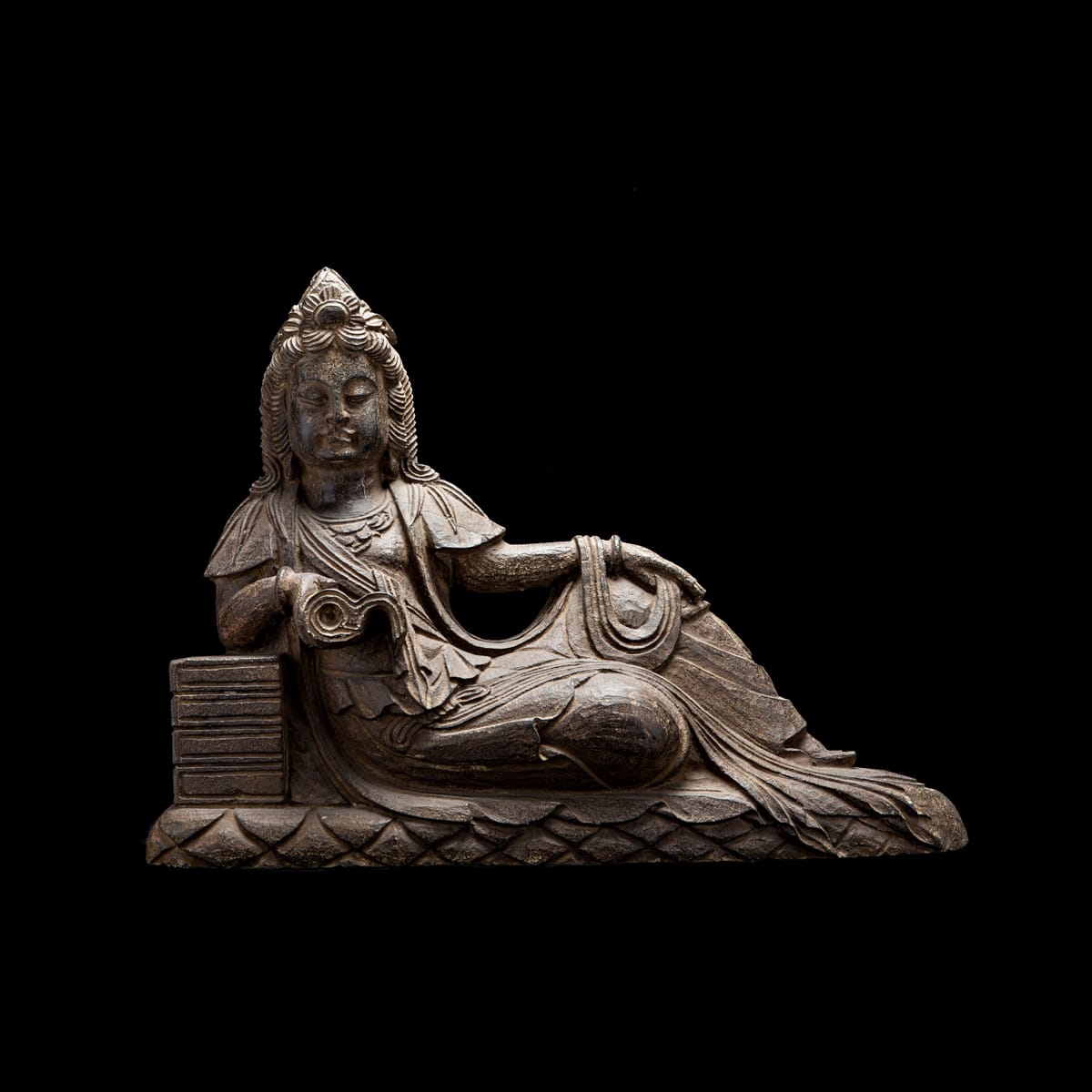Stone Reclining Guanyin, 1800 CE - 1900 CE
Stone
41.1 x 57.2 cm
16 1/8 x 22 1/2 in
16 1/8 x 22 1/2 in
BF.035
Further images
This stone reclining Guanyin is a beautiful representation of the Bodhisattva of compassion. Guanyin, or Avalokiteśvara in Sanskrit is often described as the “Goddess of Mercy” or the most beloved...
This stone reclining Guanyin is a beautiful representation of the Bodhisattva of compassion. Guanyin, or Avalokiteśvara in Sanskrit is often described as the “Goddess of Mercy” or the most beloved Buddhist divinity. The earliest description of Guanyin describes her as a Bodhisattva who can take on the form of any god, any Buddha, any king, as well as any gender or human. Guanyin was originally depicted as a male bodhisattva, but in more modern representations, and starting in the 11th century in China, Guanyin acquired female attributes. She has also been considered to be androgynous or without gender. Chinese forms of Guanyin, like this particular sculpture, usually depicts her as a young beautiful woman, dressed in a flowing robe and a necklace symbolising Indian or Chinese royalty. She is wearing a crown atop her thick curly locks and holds a book in her right hand, while her left drapes elegantly above her left knee. This Guanyin is shown in a hybrid position-–the royal ease and the sleeping lion poses—both of which are common representations of the Bodhisattva.
Bodhisattva was originally defined in early Indian Buddhism as referring to the Buddha Shakyamuni (Gautama Siddharata or the present Buddha) in his former lives. Later on, Bodhisattva came to mean anyone who aspires to awakening, vowing to become a buddha. Mahayana Buddhist tradition ascribes that there are many bodhisattvas through time and space, existing as potential buddhas. Bodhisattvas are frequently characterised as extremely powerful, but compassionate and humble. Guanyin remains one of the most famous bodhisattvas–the earthly manifestation of the Buddha Amitabha, who guards the world between the departure of Buddha Gautama and the arrival of the future Buddha, Maitreya. Guanyin also protects against shipwreck, assassins, fire, robbers, and wild beasts. Worship of the bodhisattva began in China as early as the 1st century CE.
Bodhisattva was originally defined in early Indian Buddhism as referring to the Buddha Shakyamuni (Gautama Siddharata or the present Buddha) in his former lives. Later on, Bodhisattva came to mean anyone who aspires to awakening, vowing to become a buddha. Mahayana Buddhist tradition ascribes that there are many bodhisattvas through time and space, existing as potential buddhas. Bodhisattvas are frequently characterised as extremely powerful, but compassionate and humble. Guanyin remains one of the most famous bodhisattvas–the earthly manifestation of the Buddha Amitabha, who guards the world between the departure of Buddha Gautama and the arrival of the future Buddha, Maitreya. Guanyin also protects against shipwreck, assassins, fire, robbers, and wild beasts. Worship of the bodhisattva began in China as early as the 1st century CE.







